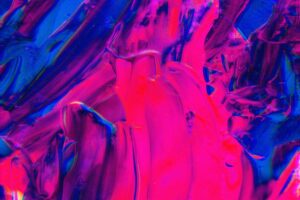
According to the DACH Z – Digital Art Convention last year, the main debates are still hovering around the potential future of art, and the research conducted by the Future Museum in collaboration with the University of Stuttgart offered fresh perspectives on museums and possible adjustments in the matter of VR and AR adoption.
It seems that the visitor experience might have changed in the past years amid the pandemic situation interfering with museum visits, which seemed to increase the number of visitors in 2021.
The research revealed by Fraunhofer IAO in collaboration with the University of Stuttgart is capturing significant data and surveys to improve the visitor experience and see a possible link between digitalization management and embracing design and technology.
The visitor and non-visitor surveys observed a percentage of only 1% of visitors might have used VR and AR to explore exhibitions, and 70% of people are curious to see mixed formats, which might include analogue and digital formats.
The main question remains: what will be a possible resolution to improve the visitor experience and enhance real-time communication while still keeping connected through a hybrid environment and being able to offer augmented information and smart services?
Changing trends and implementing new digital techniques may improve the process of determining how much visitors can remember through action, visual, and verbal activities. Confucius said: “I see and forget, I hear and I remember, I do and I understand.”
A 10-month study has shown that the neurological perceptions of art through augmented and virtual reality have provided an immersive and stimulating experience on par with authentic work seen in person.
The EEG findings suggest that the aesthetic impact can’t be denigrated by a digital interface representation but that digital reproductions may improve the magnitude of brain activity compared to the in-person view of art.
AR paintings were reported to be the most memorable in the long term, being able to process a high level of information, although the participants of the experiment reported an equal clear short-term memory of paintings both in AR and VR.
The head of operations of the Swiss National Museum claims that the real challenge is to bring the digital and analogue worlds together, assuring that VR and AR will imitate the feeling of being in a real room.
The perfect example, which kicked off in 2020, was the World Expo Dubai project, whose themes were opportunities, mobility, and sustainability. The projects were estimated to cost over $7 billion in investment, with a delay due to COVID regulations, they could only be completed between October 1st, 2021 and March 31st, 2022.
The tour welcomed the digital twin of the Baden-Württemberg House, a 3D application that enabled a digital representation of the architectural side, 3D streaming and exhibits accompanied by interactive media elements and games.
From one step aside to a QR Future: Will Society be Able to Co-Determine the Future of Museums? According to Claudia Emmert, the director of the Zeppelin Museum Friedrichshafen: “The challenge stays in developing public participation and turning it into a self-evident part of museum work, comparable to collaborative projects like Wikipedia.”
The Fraunhofer IAO Engineering Lab is still interested in constantly testing and developing prototypes of products, buildings, spaces, and environments in virtual reality, intending to establish a new horizon in smart visitor experiences.
Can a simple scroll through paintings by Franz Marc and Pier Mondrian be a gimmick or perceived as low-threshold art?
The barrier breakers are still concerned about building a channel that recognises the main shifts in the art world and determining possible solutions to the closedown. Mainly, the engagement is still under observation.
Are sales events profitable from a selling point?
The marketing strategies take Paris as an example of ongoing sustainability in fashion and great art display, although digitalization is supporting trends more than the commercial perspective.
The outlook watched an experiment on how the Netherlands came up with free tickets for students and parents to have higher participation in museums. The final point of the discussions by experts has proven that when technology comes to play, there is no substitute for a selling process, but a new playground to experiment.
Carina Schuster is a multilingual tech and science editor for The London Financial & a podcast anchor and producer for SciTech Suisse, covering groundbreaking stories in the matter of disruptive technology developments and interviewing top experts in AI, the Metaverse, Web3, Blockchain and scientific research. Throughout her experience as a journalist in the editorial and digital worlds, she was selected by CNN Money Switzerland in 2020 as a digital producer intern and has demonstrated a collaborative and creative spirit, working alongside talented journalists and delivering impactful stories with the main aim of simplifying the complexity of technology.

This really answered my problem, thank you!
Do you mind if I quote a couple of your articles as long as I provide credit and sources back to your weblog? My website is in the exact same area of interest as yours and my visitors would definitely benefit from a lot of the information you provide here. Please let me know if this ok with you. Cheers!